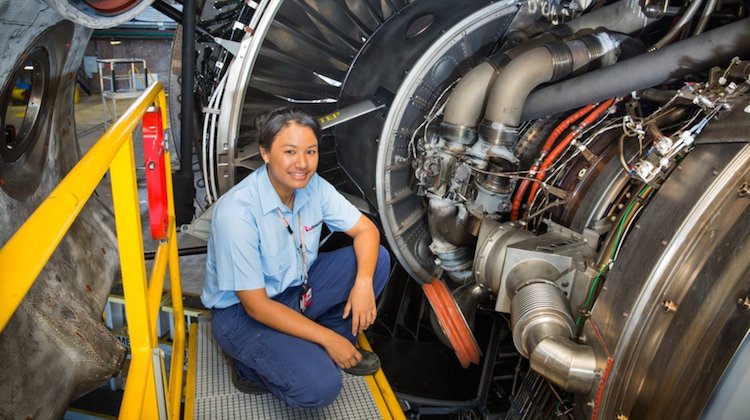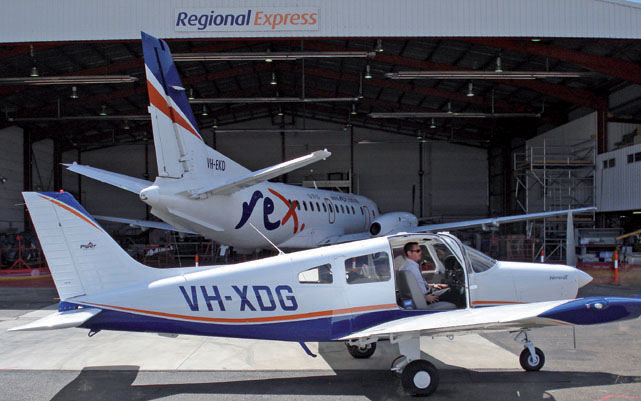Aviation industry estimates put the proportion of pilots around the world who are female at about three per cent.
The figure is similar for the number of females in senior positions in airlines such as chief executives, as well as technical roles.
While the industry is doing more than ever to attract more qualified women into senior management, into the flightdeck and into the workshop, its efforts have yet to meaningfully move the needle in the other direction.
Given the expected growth in aviation, the need to increase the pool of candidates from which airlines, airports and air traffic managers recruit from is becoming ever more important.
Encouraging more women to consider a career in these sectors looms as a key plank of meeting that target.
The 15-member Association of Asia Pacific Airlines (AAPA) passed a resolution at its annual assembly of presidents gathering in Jeju, South Korea last week calling on governments to support the International Civil Aviation Organisation’s (ICAO) New Generation of Aviation Professionals (NGAP) initiative by partnering with the aviation industry to invest in the education and training of future aviation professionals.
“The association also calls on governments and other aviation stakeholders to promote best practices in human resource development including a renewed commitment towards the further diversification of the workforce and gender equality,” the resolution said.
AAPA director general Andrew Herdman said there was a lot more that needed to be done, from expanding the teaching of STEM – science, technology, engineering and mathematics – in schools to having flexible rosters that meant talented aviation professionals were able to keep working when their personal circumstances changed.
Further, the matter of both workplace diversity and gender equality has been a topic of active discussion within the AAPA and the industry more broadly.
“We are driven from an operational culture, we’ve got to adjust accordingly. Still run the operation, but try to offer a degree of flexibility because different people have different requirements,” Herdman told reporters in Jeju on October 19.
“There are many many opportunities ahead in this industry as we said in terms of the growth and it’s important that’s well publicised. It’s a challenge and it needs more than talk.”
Launched in 2009, the ICAO NGAP initiative helps raise awareness and engages with aviation stakeholders to attract, educate and retain workers.
It holds events, promotes STEM and helps ICAO member states develop NGAP strategies for their home markets.

Boeing outlook highlights the size of the task
The Boeing 2018-2037 Pilot and Technician Outlook released in July estimated the airline industry required 635,000 new pilots over the next 20 years to meet the expected doubling of the fleet and record demand for air travel.
More broadly, Boeing’s outlook also forecast the need for 96,000 business aviation pilots and 59,000 civil helicopter pilots over the next two decades. It is the first time the Boeing report has offered a view on these two sectors.
In total, that means a need for 790,000 pilots between now and 2037, which Boeing says was about double the current workforce and the most significant demand in the outlook’s nine-year history.
Boeing noted in its Business Environment Update report for 2018 there were currently 295,000 active commercial pilots around the world.
Meanwhile, the latest outlook lowered its forecasts for commercial maintenance technicians by four per cent to 622,000, from 648,000 a year ago.
Boeing said this was due primarily to longer maintenance intervals for new aircraft.
Total technician demand for the next two decades, once the 89,000 needed for business aviation and 43,000 for helicopters was included, was 754,000.
Cathay Pacific chief executive Rupert Hogg, who is the incoming chair of AAPA, said his airline was committed to greater gender equality.
“There are two challenges. One is attracting people in the first place and attracting women to come and work for us,” Hogg told reporters at the AAPA assembly of presidents’ closing media conference.
“And that’s just a huge opportunity and we’ve done that badly in the past and we can do better in the future. I mean, there is a fantastic potential workforce out there,” he said.
“The second issue I think is how can we adjust our structures or the nature of working for us that makes it easier for people to fulfil a life-long career. through whichever role they are interested in.”
Hogg said Hong Kong-based Cathay Pacific had a number of working groups looking at the issue of work-life balance.
“I think ultimately it is about culture in the organisation as well as a set of rules and policies,” Hogg explained.
“You can set that at the top. We are really committed to that.”
The consequences of a tightening labour market for pilots amid strong global air traffic growth are real.
These staffing challenges for airlines around the world lead to flight cancellations, the ending of routes and even airlines struggling to stay afloat, according to the Boeing outlook.

One such example is from Australia’s Regional Express (Rex), which has previously expressed its concerns over the impact of the global pilot shortage on its operations.
The airline in July apologised for the disruption to its network due to what it said was the industry-wide pilot shortage, which meant not having the usual contingent of stand-by pilots rostered for duty. As a consequence, Rex said any last-minute sick leave could result in flights being cancelled or combined with other routes.
The outgoing AAPA chair, Korean Air president and chief operating officer Walter Cho, said the shortage of pilots has been keenly felt at his airline.
“I just got an email yesterday that two of our pilots left, one to China and one to one of our low-cost carriers in Korea,” Cho told reporters in Jeju.
“Becoming a pilot is a long-term investment. It is a long-term investment for us too to have them be sufficiently trained and be safely operating our airplanes.
“For us, it’s critical to maintain that manpower but it’s getting tougher and tougher.”
On the issue of gender equality, Cho said Korean Air welcomed having more women pilots but received only a very small number of applications from them.
Asked if Korean Air was committed to the changes to work rosters and other working conditions to facilitate more women, particularly working mothers, staying or getting into the industry, Cho said: “My question back to you is, why does the woman always have to raise kids? Why is it only women that has to raise kids? I think that has to change before we change ours.”
Herdman said there was a narrowing in the differences in salary for aviation roles across different countries.
“The differentials in pilot salaries between developed countries and developing countries have narrowed and frankly there is an international market and you have to pay international rates now,” Herdman said.
“That’s a different feature compared to a decade ago and airlines are having to adjust.”
“The old model was you trained pilots who would then stay with you throughout their career whereas now people are more inclined to move around and seniority practices and so on have to be looked at.”
Herdman said there was also some consideration of lifting the retirement age for aviation professionals in countries where that applied given “people are living longer, and people can operate safely to older ages”.
Report highlights shortage
From a local perspective, an expert industry panel review of the aviation training sector in this country published in July found Australia was experiencing a severe shortage of aviation personnel, with the situation getting worse.
“Urgent action is required if the country is to avoid major disruptions,” stated the report, written by a panel of experts chaired by The Australian Aviation Associations Forum and comprising representatives from Aircraft Structural Contractors, Aviation Australia, Basair Aviation College, QantasLink, the Regional Aviation Association of Australia, the Regional Express Flight Training Academy and Virgin Australia.
Swinburne University in October launched an aviation scholarship for women sponsored by the International Aviation Women’s Association (IAWA).
It said Swinburne was the first university in the Asia Pacific region to offer a new aviation scholarship for women.
And Virgin Australia is targeting an equal intake of males and females for its pilot cadetship program.
VIDEO: A look at the Virgin Australia pilot cadetship program from Virgin Australia’s YouTube channel.
Most significantly, Qantas in late September announced Wellcamp Airport in Toowoomba as the site of its first pilot training academy, with a second site to be named in 2019.










